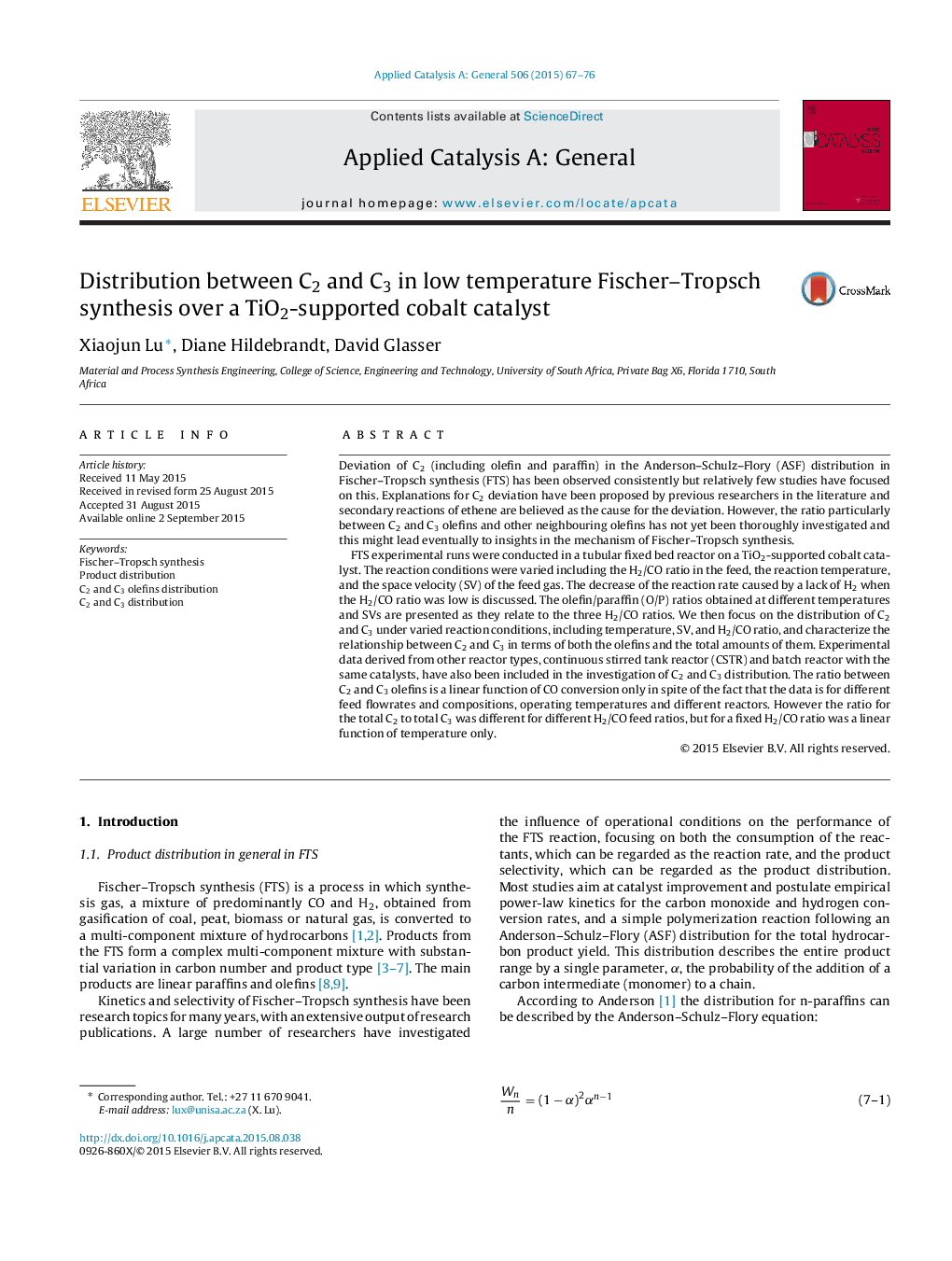| کد مقاله | کد نشریه | سال انتشار | مقاله انگلیسی | نسخه تمام متن |
|---|---|---|---|---|
| 39044 | 45802 | 2015 | 10 صفحه PDF | دانلود رایگان |

• The distribution between C2 and C3 in Fischer–Tropsch synthesis is investigated.
• Distribution between C2H4 and C3H6 has a correlation with CO conversion.
• Such correlation is consistent for data derived with different types of reactors.
• Such correlation is consistent for data derived under steady and unsteady states.
• Distribution between overall C2 and C3 is mainly a function of temperature.
Deviation of C2 (including olefin and paraffin) in the Anderson–Schulz–Flory (ASF) distribution in Fischer–Tropsch synthesis (FTS) has been observed consistently but relatively few studies have focused on this. Explanations for C2 deviation have been proposed by previous researchers in the literature and secondary reactions of ethene are believed as the cause for the deviation. However, the ratio particularly between C2 and C3 olefins and other neighbouring olefins has not yet been thoroughly investigated and this might lead eventually to insights in the mechanism of Fischer–Tropsch synthesis.FTS experimental runs were conducted in a tubular fixed bed reactor on a TiO2-supported cobalt catalyst. The reaction conditions were varied including the H2/CO ratio in the feed, the reaction temperature, and the space velocity (SV) of the feed gas. The decrease of the reaction rate caused by a lack of H2 when the H2/CO ratio was low is discussed. The olefin/paraffin (O/P) ratios obtained at different temperatures and SVs are presented as they relate to the three H2/CO ratios. We then focus on the distribution of C2 and C3 under varied reaction conditions, including temperature, SV, and H2/CO ratio, and characterize the relationship between C2 and C3 in terms of both the olefins and the total amounts of them. Experimental data derived from other reactor types, continuous stirred tank reactor (CSTR) and batch reactor with the same catalysts, have also been included in the investigation of C2 and C3 distribution. The ratio between C2 and C3 olefins is a linear function of CO conversion only in spite of the fact that the data is for different feed flowrates and compositions, operating temperatures and different reactors. However the ratio for the total C2 to total C3 was different for different H2/CO feed ratios, but for a fixed H2/CO ratio was a linear function of temperature only.
Figure optionsDownload high-quality image (104 K)Download as PowerPoint slide
Journal: Applied Catalysis A: General - Volume 506, 5 October 2015, Pages 67–76